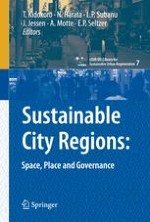How should regional cities develop regional development strategies for their sustainable future? How can such strategies work effectively? Regional cities are now at a crossroads: will they decline or be regenerated under the impacts of globalization? Their sustainable regeneration as creative regional centers will play a decisive role in their sustainable development as a whole, but only with viable regional spatial strategies that strengthen the network of cities and their hinterlands. The concern here lies in urban regeneration and strategic spatial planning at the city-region level. This book records observations of 12 dynamically changing regional cities in Asia, Europe and the United States. The form of the city region, urban regeneration and strategic spatial planning as well as the local and regional governance of each city are examined. Through this empirical and comparative analysis, essential lessons are drawn, which will add a new perspective to discussions on the sustainable future of regional cities in an age of globalization.
